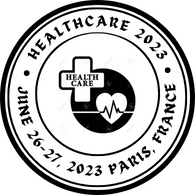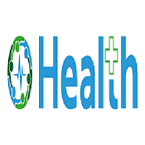Sessions and Tracks
Track 1: Health Care Supervision and Management
Health Care Supervision and Management (HSM), a track in the Master of Science in Health Informatics program, provides students an opportunity to acquire advanced skills in administration and supervisory management in health care, long-term care, and rehabilitation. Students in this track develop the combined skills of health care management and organizational leadership. With these skills, graduates can implement their leadership and business acumen to enact change in a complex and dynamic health care landscape.
Track 2: Health Care Services
Social insurance uses were measurable to be $3.54 trillion of every 2017, and square measure anticipated to take off to $5.55 trillion out of 2025. The medicinal services advertise inside the U.S. all through 2017 encased the principal classes of hospitalization ($1,140.8 billion); dental, Dr. what's more, clinical administrations ($845.0 billion); pharmaceuticals ($360.1 billion), together with home and private human services ($269.4 billion). Health Economics and health care is the field identifying with authority, administration, and organization of general public health, health awareness systems, clinics, and doctor's facility systems. Health care executives will facilitate improve life for lots of, even thousands of individuals a day. Healthcare executives have a way of social mission they deeply care concerning the people they work with and serve. Hospitals and healthcare organizations provide opportunities for those who want to “do well by doing well.”
Track 3: Healthy Aging
According to the report, the worldwide anti-aging market was valued at USD 100 forty.3 billion in 2015, is foreseen to reach USD 216.52 billion in 2021 and is anticipated to grow at a CAGR of seven.5% between 2016 and 2021. Aging thinks about with physical, mental, and social aspects and implications of aging. The field of aging and gerontology is actually quite broad, containing many professionals who focus on various aspects of aging and development. As indicated by the report, the overall enemy of maturing market was esteemed at USD 140. 3 billion of every 2015, is foreseen to achieve USD 216.52 billion out of 2021 and is foreseen to develop at a CAGR of seven.5% somewhere in the range of 2016 and 2021. While it might be considered one monster field, it genuinely comprises of the numerous littler fields all working related to an assembled center on middle-aged and older adults.
Track 4. Nutrition, Health and Aging
Nutrition is defined as a branch of science that compacts with the physiological body processes, understanding the part of nutrients and other substances for maintenance, growth, reproduction, health and disease of an organism.
Health can be distinct as an ailment of physical, mental and social well-being free from disease and infirmity. The maintenance and good health is accomplished through a blend of various physical, mental, and social factors. Health is a progressive notion highlighting social and peculiar resources, as well as physical capacities.
Aging states to the gradual physical, psychological, and social changes in an organism that leads to a superior risk of weakness, disease or death. Aging comprises oxidative stress, glycation, telomere shortening, side reactions, mutations, etc. It rises to the progressive damage to structure and functions of cells.
Track 5: Nutritional Deficiencies
Nutritional deficiencies primarily occur when a person doesn't take adequate essential nutrients. An insufficient consumption of essential nutrients like proteins, vitamins, carbohydrates etc., in the intake can lead to Nutritional deficiency. It can be overwhelmed by consumption of balanced diet or taking supplements to balance the scarce nutrients in the body. A healthy, nutritious and balanced diet is crucial for the overall health and well-being.
-
Iron deficiency
-
Iodine deficiency
-
Vitamin D deficiency
-
Vitamin B12 deficiency
-
Calcium deficiency
-
Vitamin A deficiency
-
Magnesium deficiency
Track 6: Pediatric Nutrition
Pediatric nutrition studies the dietary requirements of children to support growth and changes in organ function and body composition. Vigorous consumption in childhood and adolescence is chief for proper growth and development and plays vital role in preventing several health conditions.
Nutrient-enriched diet aid the children to attain and maintain a healthy body weight and reduce the risk of developing health conditions such as High blood pressure, Heart disease, Type 2 diabetes, Cancer, and Iron deficiency.
-
Carbohydrate Malabsorption
-
Disorders of Vitamin Absorption
-
Iron Deficiency Anemia
-
Malabsorption
Track 7: Clinical Nutrition
Clinical nutrition centers on the prevention, diagnosis, and management of nutritional variations in patients connected to chronic diseases and conditions primarily in health care. Clinical nutrition in this sense states to the management of patients, including not only outpatients at clinics and in private practice, but also inpatients in hospitals. It integrates primarily the scientific fields of nutrition and dietetics. Furthermore, clinical nutrition aims to sustain a healthy energy balance, while also providing sufficient amounts of nutrients such as protein, vitamins, and minerals to patients.
Track 8: Health Care IT and Digital Health
It covers all the comprehensive sessions related to e-health, health informatics, healthcare IT, internet health care, social media, telemedicine, medical imaging, mobile health, personalized medicine, wearable medical devices, genomics and genetic information, big data and data management, wellness and prevention, health care simulation, patient accessibility, regulations and the social and ethical implications of advances in health care. The core aim of this conference is to provide an opportunity for the people to meet, interact and exchange new ideas on digital health and health care IT.
Track 9: Patient Safety
Patient Safety is characterized as the quest for the lessening and moderation of perilous acts inside the medicinal services framework, and the utilization of best practices appeared to prompt to ideal patient results." There are various aspects of patient security, and it's imperative that everybody required in patient wellbeing, including patients, their families, and social insurance experts, know about the issues, relief procedures, and best practices for guaranteeing persistent security for everybody.
Track 10: Internal Medicine and Primary Care
Primary care is a healthcare given by the healthcare provider. This provider acts as first contact, principal point of continuing care for the patient within a health care system, and coordinates with another specialist care that the patient may need. Patients commonly get primary care from the primary care physician. Physicians specializing in internal medicine are called internist
Track 11: Novel Coronavirus
Coronavirus disease 2019 (COVID-19) is well-defined as illness triggered by a novel coronavirus now called severe acute respiratory syndrome coronavirus 2 (SARS-CoV-2; formerly called 2019-nCoV), which was first identified amid an outburst of respiratory illness cases in Wuhan City, Hubei Province, China. It was chiefly informed to the WHO on December 31, 2019. When humans first contract a coronavirus, it frequently effects from contact with an infected animal. Some of the furthermost common carriers are bats, however they do not typically transmit coronaviruses directly to humans. Instead, the virus might pass through an intermediary animal, which will usually, however not always, be a domestic one.
Track 12: Nutritional Health & Epidemiology
Nutritional epidemiology examines dietary and nutritional factors in relation to disease occurrence at a population level. Diet and nutrition play an important role in key causes of death, illness and disability like coronary heart disease, stroke, hypertension, atherosclerosis, obesity, cancer, osteoporosis, dental caries and gall bladder disease.
Track 13: Mental Health & Mental Disorders
They are generally characterized by a combination of abnormal thoughts, perceptions, emotions, behaviour and relationships pain or potentially disabled working. Mental disorders include: depression, bipolar disorder, schizophrenia and other psychoses, dementia, and developmental disorders including autism.
Track 14: Healthcare Nursing
Nursing is a healthcare profession that focuses on the care of individuals and their families to help them recover from illness and maintain optimal health and quality of life. Nurses are distinct from other healthcare providers as they have a wide scope of practice and approach to medical care.
Track 15: Sexually transmitted diseases (STD)
Sexually transmitted diseases (STDs), or sexually transmitted infections (STIs), are infections that are passed from one person to another through sexual contact. The contact is usually vaginal, oral, or anal sex. But sometimes they can spread through other intimate physical contact. This is because some STDs, like herpes and HPV, are spread by skin-to-skin contact.
Track 16: Reproductive, Perinatal & Pediatric Epidemiology
Reproductive Epidemiology includes distribution, determination of diseases in human population. The main topics which include are planning, adolescent sexual behavior, maternal morbidity and mortality family domestic violence, contraceptive safety and efficacy and population based reproductive health surveys. The main causes of perinatal epidemiology includes with pregnancy side-effects such as gestational diabetes, preeclampsia, preterm birth, birth defects, and also pregnancy outcomes. Pediatric epidemiology concludes about the disease conditions in children.
Track 17: Globalization, Occupational Safety & Health
Globalization occupational health and safety is the field of public health that studies trends in illnesses and injuries in the worker population and proposes and implements strategies and regulations to prevent them and contributed to health improvements through diffusion of new health knowledge, low-cost health technologies, and human rights.
Track 18: Sports Nutrition and Exercise Metabolism
Sports nutrition: Sports nutrition is the study and preparation of nutrition and diet in relation to successful health. It centers on the type and the size of fluids and food taken by a sportsperson.
Exercise: Exercise refers to the body activity that improves physical fitness and maintains overall health and wellness. It is implemented to help in development and to increase strength, to avoid aging, develop muscles and the cardiovascular system, to enhance athletic skills, weight loss or maintenance, to improve health and also for gratification.
Metabolism: Metabolism refers to a collection of life-sustaining chemical reactions in body. The three chief goals of metabolism include conversion of food to energy to carry out cellular processes and functions, the adaptation of food to building blocks for proteins, lipids, nucleic acids, and certain carbohydrates, and the removal of metabolic byproducts.
The term metabolism can also state to the sum of all biochemical reactions that arise in living organisms, with ingestion and the carrying of substances into and between different cells. The clusters of reactions that follow within the cells come under intermediary metabolism or intermediate metabolism.
-
Fitness
-
Nutrition and recovery
-
Catabolic Metabolism: The breaking down of compounds.
-
Anabolic Metabolism: The building up (production) of compounds
Track 19: Clinical Nutrition
Clinical nutrition centers on the prevention, diagnosis, and management of nutritional variations in patients connected to chronic diseases and conditions primarily in health care. Clinical nutrition in this sense states to the management of patients, including not only outpatients at clinics and in private practice, but also inpatients in hospitals. It integrates primarily the scientific fields of nutrition and dietetics. Furthermore, clinical nutrition aims to sustain a healthy energy balance, while also providing sufficient amounts of nutrients such as protein, vitamins, and minerals to patients.
Track 19: Mental Health and Mental Disorder
Mental Health is wellbeing conditions that are described by changes in perspective, temperament and conduct that are connected with torment or conceivably debilitated working. Psychological sickness is the term that alludes by to a great extent to all diagnosable mental scatters. Mental clutters add to an expansive gathering of issues that may join handicap, passing. Most outstanding purposes behind incapacity are mental clutters. The ensuing sicknesses weight of dysfunctional behaviour is among the most astounding everything being equal. In some random year, a normal 18.1% (43.6 million) of U.S. grown-ups ages 18 years or more experienced psychological instability and 4.2% (9.8 million) of European experienced a genuinely crippling dysfunctional behaviour. Neuropsychiatric scatters are the primary wellspring of handicap in the Asian nations, speaking to 18.7% of all long periods of life lost to powerlessness and pre develop mortality. Moreover, suicide is the tenth driving explanation behind death in the around the world, speaking to the passing of around 43,000 of every 2014. Mental wellbeing assumes a noteworthy job in individuals to keep up incredible physical wellbeing.
Market Analysis
Market Analysis:
In an increasingly cost-constrained global healthcare market, healthcare and Pharma companies are leveraging advanced analytics for data-driven decision making. With our unique approach to assess an organization’s analytical maturity and customizable data management and solutions suite, we provide a holistic range of descriptive, predictive and prescriptive analytics services for global clients.
Health Economics and Outcomes Research (HEOR) focuses on the comparison of costs and consequences of healthcare. Health economics uses mathematical models to synthesize data from biostatistics and epidemiology for cost/pricing decision making.
Outcomes research includes medically related research which investigates the benefits & results of healthcare practices. This study uses epidemiology to link healthcare outcomes (quality of care, quality of life) with independent variables such as geography, income, or lifestyle.
Capabilities:
-
Cost-effectiveness analysis
-
Cost-benefit analysis
-
Quality of life (QOL) evaluation
-
Literature review
-
Scientific evidence analysis
Medical nutrition plays an important role in the management of certain chronic conditions such as diabetes, obesity, constipation, malabsorption, maldigestion, etc. It also helps to maintain healthy lifestyle, improve appetite and food intake, lower the risk of nutrient deficiencies, and other health conditions. Medical nutrition is recommended for patients of all ages including infants, adults, and geriatrics who are susceptible to conditions such as diabetes, obesity, renal failures, chronic diseases, neurological diseases, and others. These factors have led to an increase in demand for medical nutrition.
The India Medical Nutrition market is estimated to be valued at US$ 404.1 million in 2021 and is expected to exhibit a CAGR of 8.6% over the forecast period (2021-2028).
The key manufacturers in India are engaged in the development and launch of innovative and novel medical nutrition products, which is expected to drive the growth of India medical nutrition market. For instance, in February 2019, Nutricia International Pvt. Ltd. (Danone India) launched new ProtinexLite, with a nutrition formulation that includes Zero sugar, low GI, high fiber & 27 vital nutrients, specially formulated for adults.
India Medical Nutrition market– Impact of Coronavirus (COVID-19) Pandemic
Since the COVID-19 virus outbreak in December 2019, the disease has spread to over 100 countries across the globe. The coronavirus (COVID 19) pandemic and lockdown in various countries across the globe have impacted the financial status of businesses in all sectors. Private healthcare sector is one of the sectors, which is majorly impacted by the COVID-19 pandemic. Therefore, the Government of India has implemented some initiatives under POSHAN ABHIYAAN, the program provides nutritional support to the underweight and malnutrition patients in India. According to the World Health Organization (WHO) Country Office for India report 2020, India has adopted several initiatives and measures for providing nutritional benefits to the individuals suffering from the malnutrition, and these initiatives provide nutritional diets to needy individuals even in the COVID pandemic period. The government of India also focuses on maximizing maternal, infant, and young child nutrition, protecting the food supply chains, strengthening food security, managing cases of acute malnutrition, accelerating micronutrient supplementation and fortification activities, and strengthening school feeding and nutrition through its initiatives.



















